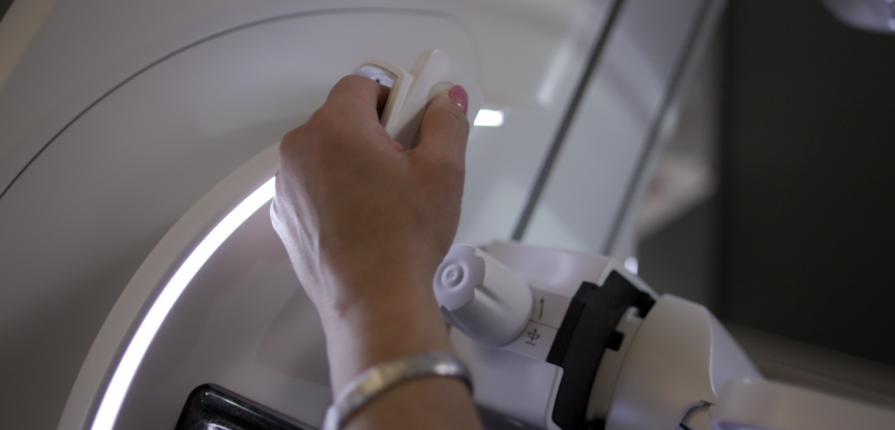What’s the worst part of a mammogram? If you ask most women, they’ll tell you it’s the compression, when their breast is squeezed between two plates. Only a breast is not designed to be flattened.
Unfortunately, compression is absolutely necessary in order to get the best image at the lowest possible radiation dose. Yet it’s also the primary cause of discomfort for some women during mammography.[1]
That’s why it’s important you let the technologist know about your past experiences with compression and tell them when the compression becomes too much. Simply being able to communicate how you’re feeling, research finds, can help reduce your pain perception because it puts more control in your hands.[2],[3]
Some mammography centers now have a remote-control device that literally puts more control in your hands. Called Pristina Dueta, it was developed to empower women during their mammogram. You use it under technologist guidance to adjust the level of breast compression during the exam.
There is evidence that women report less pain when using the device, no difference in the quality of the images, and, surprisingly, many women actually use more compression than the technologist.[4] Other studies also found no difference in image quality based on compression intensity.[5],[6]
So, ask if your mammography center has a patient-assisted compression device and, if it doesn’t, make sure you tell the technologist of your fears and concerns and say “stop” if the compression becomes too much.
[1] Asghari A, Nicholas MK. Pain during mammography: the role of coping strategies. Pain. 2004;108(1-2):170-9.
[2] Mendat CC, Mislan D, Hession-Kunz L. Patient comfort from the technologist perspective: factors to consider in mammographic imaging. International Journal of Women’s Health. 2017;9:359-364.
[3] Fernández-Feito A, Lana A, Cabello-Gutiérrez L, Franco-Correia S, Baldonedo-Cernuda R, Mosteiro-Díaz P. Face-to-face Information and Emotional Support from Trained Nurses Reduce Pain During Screening Mammography: Results from a Randomized Controlled Trial. Pain Manag Nurs. 2015;16(6):862-870.
[4] IPSOS Patient Satisfaction Study sponsored by GE Healthcare, conducted with 160 patients who used patient assisted compression across 2 sites in Europe, February 2017. Data on file.
[5] Balleyguier C, Cousin M, Dunant A, Attard M, Delaloge S, Arfi-Rouche J. Patient-assisted compression helps for image quality reduction dose and improves patient experience in mammography. Eur J Cancer. 2018;103:137-142.
[6] GE Healthcare. Patient-Assisted Compression – Impact on Image Quality and Workflow. 2017 https://www.gehealthcare.com/products/mammography/~/media/77cadae3033f4f208047b3282fd57c0b.ashx. October 28,2018.




Leave a Reply